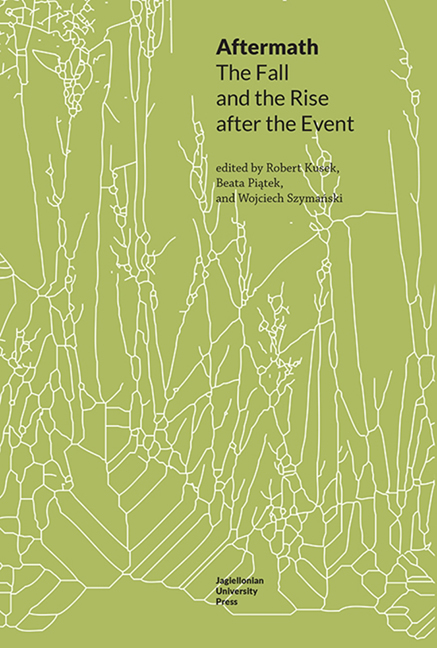The End of the World and After
Published online by Cambridge University Press: 06 November 2021
Summary
Anthropocene and Apocalypse
In Staying with the Trouble, Donna Haraway describes the early 21st century as “troubling and turbid times” (Haraway 2016: 37) that are marked by the experience of “great mass death and extinction” and “onrushing disasters,” and that are distinguished by “unprecedented looking away” and dismal refusal of “response-ability” (35) – of responding to and taking responsibility for the ongoing disasters and catastrophes that irrevocably change the planet. What Haraway pictures in her book are the times of the Anthropocene, a new geological epoch whose name, from the Greek word meaning “man,” underlines the decisive role that human activities have come to play in shaping life on earth, and reflects the status of people's actions as more powerful and pervasive than the forces of nature (Steffen, Crutzen, and McNeill 2007: 614). The Anthropocene is globally linked with overpopulation, depletion of natural resources, climate change, and species extinction that are, to a large extent, the result of the Enlightenment vision of nature as “grand and universal but also passive and mechanical,” as something to be tamed and mastered, serving merely as “a backdrop and resource for the moral intentionality of Man” (Tsing 2015: vi). The attitude to nature as passively waiting to be subdued underlies capitalism, where the figuration of nature as “inferior in an ethico-political sense” facilitates making it cheap in price (Moore 2016: 2). At the beginning of the new millennium, capitalism has become “a way of organizing nature – as a multispecies, situated, capitalist world-ecology” of the Capitalocene (6), and technological developments have produced de-natured nature, technicised environment, and feralised wo/men of the Technocene (Cera 2017: 243). In the early 21st century, human-induced change seems to have reached criticality, “pushing the Earth into planetary terra incognita” (Steffen, Crutzen, and McNeill 2007: 614) and heralding the arrival of some terrifyingly unknown future.
The sense of uncertainty and disruption caused by the growing recognition of the impact human activities have on the planet has been accompanied by an increasing popularity of narratives depicting the end of the world and its aftermath.
- Type
- Chapter
- Information
- AftermathThe Fall and the Rise after the Event, pp. 107 - 118Publisher: Jagiellonian University PressPrint publication year: 2022



